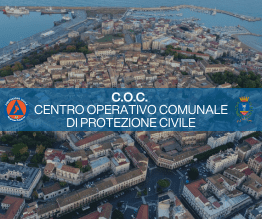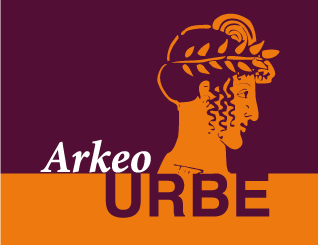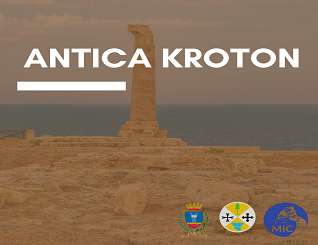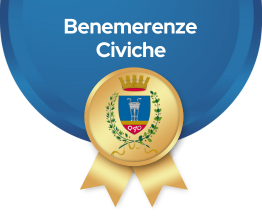Art and Culture

- Sculpture of Apollo's face
The low and sandy coasts of the Ionian coast, near Crotone are interrupted by rocky ragged edge of fossiliferous limestone, which are interspersed with the characteristics of blue clay dunes.
These cliffs are between Alice and Cape Capo Rizzuto, known since antiquity as a Japigi headlands, around which have flourished many myths related mostly to Nostoi of the Greek heroes, the exploits of Heracles, the solar cult of Apollo and the Hera.
The river Neto is the subject of a legend. It is said that the Trojan ships sailing in search of a hospitable land, which could become a new home, they stopped to refuel with food and waternear the river. The Trojan women, enchanted by the beauty of the places andtired of the long wanderings, having chosen to remain, against the advice oftheir men, set fire to the ships. From this episode, the river was namedNauaethos, which derived from the Greek words nais (ship) and aeto (burn).
Another legend reports the same fact, however, attributing it to the sisters of King Priam, captive of the Achaeans, which would set fire to the ships, to escape slavery and subsequent flattery convinced their captors not to sail.
As the Neto river, even the small stream Esaro hasits own legend: Esaro the young man went hunting for deer, very numerous in thearea, and he chased a doe who wore a ribbon on the neck of consecration. Esaro oblivious to the wounded, the deer jumped into the river, he followed her and sank in the river, which later named in his honor.
The laureate head of the hero Aisaros accompaniedby her name, decorates the side of one of the silver coins of Croton, while on another bronze coin you can see the head of the river god beardless and with the front fitted with two small horns. At the source of the river, located a few kilometers from the city, there was one of the temples extramurals dedicated to a female deity.
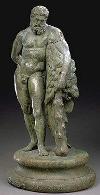
- Statue of Hercules
Crotone and the promontory Lacinio are the subject of many myths, which are involved invarious stages of the life of the city, starting from its foundation, linked to the cult of Apollo, through the response given by the Pythia of Delphi to its founder, Miscello from Ripe.
The great sanctuaries of antiquity practiced the art of divination purposes social, political and religious, and these sites were queried before major enterprises were undertaken, such as the fact of founding a city. Moreover, the short stories are confirmed by ancient crotonian coins, that since the VI b.C. century have as their emblem dominating the Delphic tripod, connected with the cult of Apollo, particularly venerated in the city and then linked to the doctrines of Pythagoras, of whom it was said that he was an incarnation of Hyperborean Apollo. The foundation brings in mythical Hercules as thefounder of the city. The facts narrated are these: Hercules, with his oxen sacred to Hyperion stops at Cape Lacinio, hosted by local hero Kroton, son-in-lawof Lacinio, who is the brother of Alcinous, the Homeric king of the Phaeacians. A thief in the night trying to steal the herd, Hercules intervenes and accidentally kills his friend Kroton. Hercules brings together the indigenous population and, having erected a monumental tomb, stating that the grave would be kind of a famous city that would have immortalized the name of the dead.

- Painting of Ulysses ship
Among the heroes pilgrims landed at the Lacinio,there is also Odysseus, the hero of the "multiform talent", in factthe annotators have identified one of the two islands that old maps show thestretch of sea off the coast of Crotone and known as Dioscoron and Calypso, theisland of Ogygia mentioned by Homer. This was the island where was the home ofCalypso, the nymph from the "curly hair" (perhaps this epithet isderived from the name Rizzuto Cape, given to one of the chiefs).
Perhaps scholiasts in place in these places theextensive island of Ogygia, took account of the fact that they were the crowflies east of Corfu, where, Ulysses was then carried by the wind, said Humerus.
However, it is difficult to recognize along thecoast of the existence of a large island, with lush vegetation, that it is theOgigia, described by Humerus, although it is certain that in the vicinity ofthe headlands Japigi, in ancient times there were many pieces of land and ofsmall islands.
In addition to the classical sources,such as Pliny and Pseudo Scylax, which place ten households Roman from thecoast, an archipelago of five islands, and the old maps that show the twoislands mentioned, examination of current nautical charts, which show in theneighborhood of dry with heights that reach 300 meters, seems to validate these sources.

- Greek temple of Apollo
Many cults accessories and legends arerelated to the great temple of Hera Lacinia at Column Cape: the cult of Thetisis said that, in the words of the Timaeus, that she had given to Hera the capeand the "vague forest"; that of her son Achilles in memory fromwhich the crotonian women used to wear black one day a year, and who had goneto the temple, expressed their grief over the death of the great Achilles"nine cubits high." Another myth associated with the temple of Lacinio is to Elena, of which, it is said, there was a large painted image, which the famous painter Zeuxis had made, modeled crotonian girls, whose beauty was proverbial, and portraying each details the most beautiful.
The legend around the temple of Hera Lacinia are numerous: for example, it is said that if someone accounted hisname on a tile of the temple, enrollment would last until the death of the manwho had written it, that in the vestibule of the temple there was an altarwhose ashes no wind could move there and that Hannibal had dedicated an altarwith this inscription of his exploits in Punic and Greek characters.
Livy describes in this way the temple:"It was near six miles from the noble city the temple of Juno Lacinia, thenoblest of the same city, holy among all peoples. Ivi was a sacred grove oftrees with dense vegetation of tall fir trees, in the middle of the court wereglad pastures where all kinds of cattle grazing sacred to the goddess withoutany shepherd; flocks in the night, separately, each according to its kind, theyreturned to the stables, never violated by the snares of the fairs, or maliceof men. Therefore, great fruits derived from such livestock was made a columnof solid gold and was consecrated, and the temple was famous not only forholiness, but also for the wealth".

- Sculpture of the Hannibal's face
These riches tried the winner Hannibal,as reported by Cicero. "Celio writes that Hannibal wanting to seize thegolden column, which stood in the temple of Juno, had perforated and solidhaving found it, he decided to take her away. The following night, duringsleep, Juno appeared to him that bade him do not do this, and threatened himthat if he had not obeyed, she would have ensured that he was also a privateeye who saw the good, and this advice was not neglected intelligent man.therefore from that gold had been removed, Hannibal took care of it was done aheifer and placed it on top of a tall column".
The name of Hannibal is also linked toLe Castella, which formerly were called Castra Hannibalis, because it has beenhanded down, that in this place the Carthaginian leader had placed their campsand that they had happened here tragic events.
It seems that Hannibal, having receivedthe order to retreat from Carthage, he was preparing for the embarkation of histroops. And with him a contingent of Italic mercenaries and not wanting to letthem go, for fear that they could go to the enemy, he ordered them to accompanyhim to Africa.
The name of Hannibal is also linked to Le Castella, which formerly were calledCastra Hannibalis, because it has been handed down, that in this place theCarthaginian leader had placed their camps and that they had happened heretragic events.
Its eems that Hannibal, having received the order to retreat from Carthage, he waspreparing for the embarkation of his troops. And with him a contingent ofmercenaries Italic and not wanting to let them go, for fear that they could goto the enemy, he ordered them to accompany him to Africa.
The Italians refused and Hannibal, after they had brought them on the shore, hemassacred them. Eventoday, the myth lives reworked in the legends related to the rites Marian. Apopular legend says that Our Lady of Crotone is the sister of the Virgin MaryGreek Island and, dispersed in various places, there are a total of sevensisters. Beyond the smile that elicits tradition, howcan we forget the myth of the Pleiades, the seven sisters, become aconstellation?










